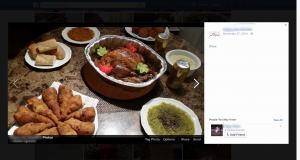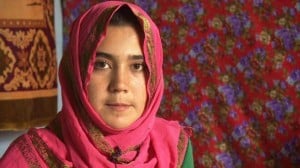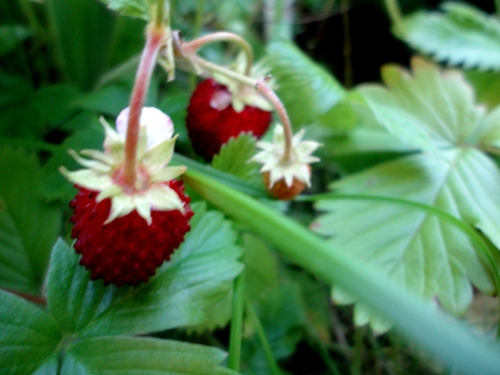
I like the long dark winter months in Sweden. This is something that tends to make people question my sanity. But even I will admit summers here are special, as everything seems to burst into exuberant life, Mother Nature in a hurry to her work done before the cold weather returns. Though the summer is short, the days are long: in the north, the sun never sets. Where we live, there were about four hours of night on the first day of Ramadan. That is hardly enough time to fit in two meals, so I tend to skip the “Scamble for Suhur,” which occurs at about 2 am in our home. One night though, I discovered a bowl of freshly-picked smultron in the fridge – smultron being the tiny wild strawberries that grow everywhere in Sweden and abundantly in our garden. They proved irresistible, the perfect suhur snack.
So far in my life, I’ve lived in two countries in the Arab world where Ramadan announces itself with neon lights, empty streets at sunset and everyone staying up till dawn. Otherwise, we have been living “barra” as people say in Libya – abroad, in the diaspora, or, to translate barra literally, “outside.” There is a proverb I heard constantly growing up: “Ya bani fi gheir bladak, la leik wa la li awladak” – you who builds in a country not your own, it is not yours and it won’t be for your children. This was the wisdom offered by elderly women, full of life and wrinkles, who commandeered the tea ceremony in my grandmother’s home. Along with my glass of tea and almonds, I would get the chiding question: ”When are you all coming home?”
This year, many grandmothers will stop asking that question, as families and friends we have known over the years are returning in a homeward bound wave to Libya after over two decades abroad, planning on building their lives there now that Gaddafi is gone. My family went through this cycle of immigration, living abroad, and returning – and then we repeated it. Which, though an unsettling way to grow up, gave me the advantage of having lived for years in my country of origin, experiencing Ramadan amidst the hustle and bustle of a large extended family, and getting acquainted with the Ramadan siesta, sleeping the afternoons away on mattresses with the wooden shutters closed except for a chink allowing a single ray of sunlight into the room.

We’re a family that is never far from packing tape and boxes. Wrapping fragile china in newspapers and the anxiety of moving house are as familiar as the cool openness of airports. We have literally moved more times than my twenty-five years. And so, inevitably, one year the first day of Ramadan coincided with the first day after moving into another new home: the walls were glaringly white, the rooms had the antiseptic quality of an unlived in space. We had just moved across the country, from west Libya to a city close to Egypt, a part of the world where people cook by hooking up gas cannisters to the oven, and since we had no such cannisters with us, we used a hotplate to make our iftar. But we were really not in the mood to start unpacking, and so by the time it was sunset, despite the hotplate situation, we had a veritable feast, which we ate on the floor surrounded by unopened boxes.
That day to me sums up our semi-nomadic existence. It has become a family narrative, as though we’ve become imprinted with a need to change our environment constantly: if there is no move after three years, a strange kind of restlessness sets in.
One of the few constants in this nomadic life has been the effort to make Ramadan and Eid special. When my siblings and I were younger and my parents were doing the inevitable competition with Christmas, we would wake up on the kebira (the eve of Ramadan or Eid) to find that the house had undergone a metamorphosis with tinsel and candles and lanterns and incense. Nowadays we don’t do more than light a couple of candles as we break our fast – but being together around the iftar table was and is always at the heart of Ramadan in our home, wherever we happen to be.
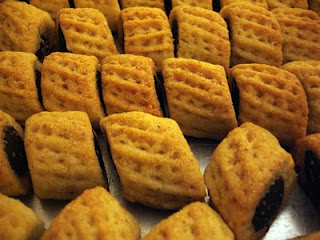
Every iftar begins with dates and milk, bseisa and huwera, and if we’re really making an effort, khushaf and the thirst-quenching qamar al din. Then we pray and sit down for the self-explanatory aromatic Libyan soup. Alongside this, there is at least one kind of stuffed pastry burek, or the Libyan speciality of mubatan, potato wedges stuffed with minced meat. Everything has to be a calibrated amount to avoid food piling up in the fridge – extravagant iftars equal leftovers, since people tend not to eat much after fasting for twenty hours. Unless, of course, we have guests – which demands a table groaning under the weight of the food and a moratorium on cooking the next day.
After the iftar, its time for Arabic coffee with Ramadan sweets: kunafa, or qatayef, or fritters in syrup known as lugmet al qadi – in our family, these honeyed sweets are only ever eaten during Ramadan, a rule which is adhered to strictly, as though making them some other time of the year would go against the laws of nature. Then there are the Eid cookies, which in Libya are made communally, neighbors and friends getting together during the last five days of Ramadan, and making trays and trays of cookies, from the traditional such as magrood and ghrayba to the new inventions every year. In Libya, cookies are taken very seriously. In fact, food in general is taken seriously – and for more on that, see my Libyan food blog, and check out the Ramadan tag.
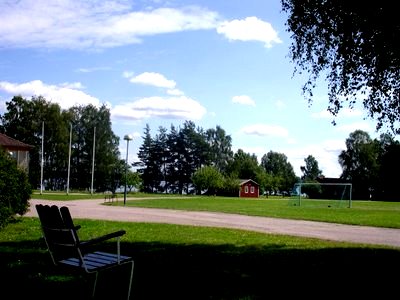
On the last day of Ramadan, children in Libya run around the streets chanting “El youm kebira u bukra eid, ifrah ya maula eltob jedid” – “Today is the eve and tomorrow is eid, be happy for your clothes are new.” To me the new clothes that are traditionally bought before Eid symbolize the newness of a soul after a month of fasting, hopefully having reconnected with your faith and been reinvigorated by the sense of personal commitment that comes with fasting which, maybe more than any other worship, is wholly between you and God. Growing up in so many different countries, Ramadan for me was not simply about a spiritual reconnecting, it was about the struggle to be connected with “home” – and realizing that for me at least it isn’t where the heart is, or any other platitude, but coming to terms with always being temporarily here, in this moment, in this place, and trying to live that moment to the fullest.
I remember one Ramadan we bought an adhan clock so we would hear the call to prayer as we broke our fast, recreating the Ramadan we had the year before in Egypt. Towards the end of the month the batteries ran out, and we didn’t replace them. It wasn’t the same as “back home,” my parents said, where the a cappella adhan song echoed across the city, and you knew everyone was breaking the fast together, and felt the sense of community that this inspires.
And yet, you can find a sense of community in the most unexpected places. I recently went into a crystal souvenir shop in Stockholm with a Swedish convert friend to buy a gift, and we noticed the display with Islamic art and jewellery, as the shopkeeper there greeted us with Ramadan Kareem.
Every time we move to a new place, traditions merge with what is there and produce a new memory. This year, that memory will be a handful of smultron for suhur, bringing together Sweden, summer, strawberries – and Ramadan.
For more on Ramadan, and to read the rest of the posts in MMW’s Ramadan 2012 series, click here.




